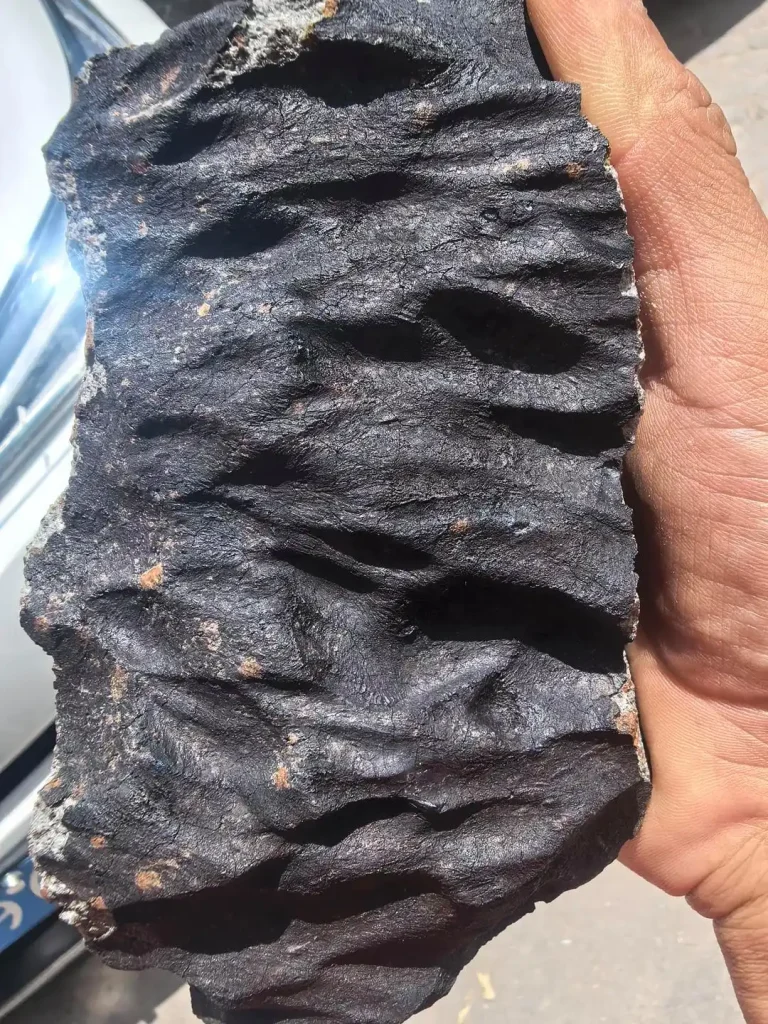At 21:33 on May 28, residents in Maoming and Zhanjiang in Guangdong province, as well as Haikou and Wenchang in Hainan province, witnessed a celestial spectacle. A massive fireball streaked across the sky from east to west, accompanied by thunderous explosions.
Multiple video recordings were captured by taxi dashcams and shop surveillance cameras. Mr. Zhang from Dianbai District in Maoming described: “The sky suddenly lit up.” He looked up to see a bright fireball flying overhead. Instantly, the light faded and disappeared, followed shortly by a deafening sound.
Ms. Li from Haikou City said she was driving at the time and saw a fireball in the distance. Her dashcam captured the event, showing the meteor descending at a 45-degree angle.
That same evening, Mr. Wang from Yangjiang City was driving home when his dashcam recorded the entire incident. The fireball descended at nearly a vertical angle, lasting for about 3-4 seconds.
Did this fireball ultimately burn up or did debris fall to Earth? Many speculated that even if meteorites did fall, they would have landed in the sea.
After the fireball event, Fan Bu, who had just returned from a meteorite hunting mission in the Qinghai to Ningxia, saw the relevant reports online. “My preliminary orbital calculations showed it should be a meteorite, and it didn’t fall into the sea,” Fan recalled.
As a meteorite hunter, Fan spends over 200 days outdoors each year searching for meteorites. On May 29, Fan flew from Yinchuan to Guangzhou, while the other two team members, Chen Jinlong and Wu Shengqiang, traveled separately from Inner Mongolia and Guangzhou respectively, meeting up in Maoming.
It took over 10 hours of excavation to retrieve the 423kg meteorite

After arriving in Guangzhou, Fan’s team immediately began their intensive work.
The team visited eyewitnesses, collected and analyzed various video materials, combined professional orbital calculations, and specifically conducted field visits and surveys in places like Hainan and Zhanjiang.
The team spent two days analyzing the fireball’s trajectory. Using eyewitness videos and surveillance footage, they calculated the angle, speed, and potential landing point of the meteoroid entering the atmosphere.
“Through analyzing several videos, I calculated that when plotted on a map, the probability of it landing on land was relatively high, while the chance of it falling into the sea was relatively small,” Fan explained. This process involved complex angle calculations, shadow analysis, and sound localization techniques.
After calculations, they reached the key conclusion: the meteorite’s fall zone was on land! With extensive practical experience, they narrowed down the search area to a region at the border of Shayuan Town and Xiaoliang Town in Dianbai District.
On the morning of June 1, they used a “high-altitude drone reconnaissance + ground search” model, following the calculated meteorite’s flight trajectory, and searched within a 2-kilometer radius using drones. An hour later, a surprise appeared.
At 10:45, Fan’s team discovered a suspected impact crater in a lychee orchard in Shayuan Town, Dianbai District. Drone footage showed a crater with a diameter of 1.2 meters, with soil scattered around, showing characteristics of tremendous impact force.
On the crater wall, Fan found meteorite fragments with fusion crust, partially covered by soil. Subsequently, team members took turns digging for over 10 hours to extract the massive meteorite, which weighed 423kg including fragments.
Testing by the Purple Mountain Observatory of the Chinese Academy of Sciences issued a certificate stating that the meteorite is a fragment from a solar system asteroid, formed 4.55 billion years ago. The content of radioactive elements in the meteorite is extremely low, only one percent of Earth rock samples, and the uranium and thorium content in iron meteorites is even lower, so the meteorite has no radioactivity and is harmless to humans.
Xu Weibiao, director of the Laboratory of Cosmochemistry and Planetary Science, researcher, and doctoral supervisor, highly praised the scientific value of the meteorite: “This is a very fresh witnessed meteorite. It fell to Earth a very short time ago, retaining much of its original information, so its scientific research value will be relatively higher.” Xu Weibiao stated that many meteorites contain material composition, physical properties, and other information from the surface of asteroids, and through studying meteorites, first-hand data about asteroids can be obtained.
